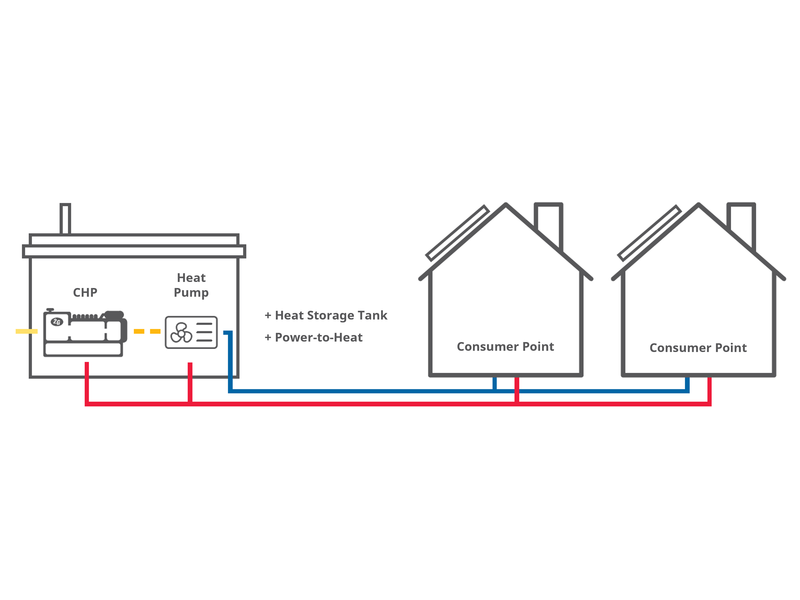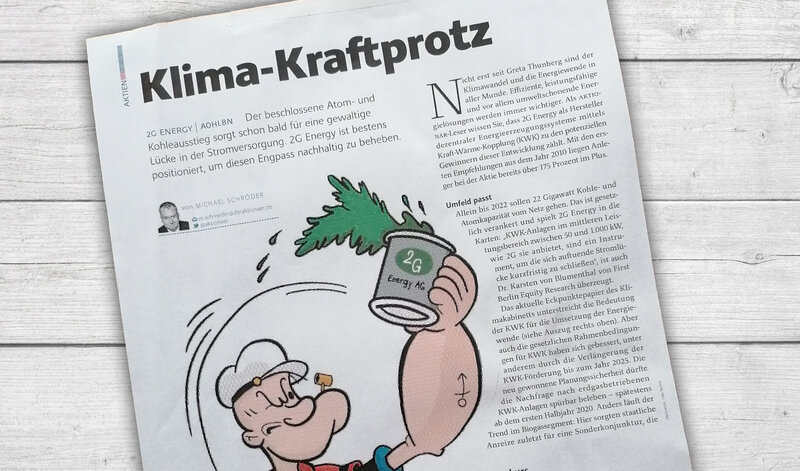Potential of Combined Systems
February 29, 2024

With the pan-European commitment to climate neutrality by 2050, the European Green Deal has a clearly defined objective. However, the way to achieve it and the measures to be taken by the EU member states are still subject to a fierce debate aggravated by recent geopolitical developments. The widespread optimism after the announcement of the Green Deal in 2019 has given way to an air of gloom brought on by the war in Ukraine and the escalating situation in the Middle East.
In light of the rise of right-wing parties across many European countries and an ever more visible impact of climate change, positions on both sides of the debate become increasingly hardened. Consequently, it is even more essential for the EU guidelines on climate and energy policy to reconcile some critical factors: the ability to compete on a global scale and achieve climate neutrality while keeping the social peace. The EU must act deliberately to ensure that every member state can make the most of its respective natural and infrastructural conditions. Cogeneration can be an essential building block in this project, as it has already proven in Germany.
Unlike the legislative acts of individual member states, such as the Renewable Energies Act (EEG) in Germany, the EU regulations are meant to be an overarching framework. They define basic principles that serve as the foundation of individual regulations in member states. In more specific terms: the framework dictates which transformations and technologies are possible per current European law and which aren’t. Amongst the plethora of different projects and legislative proposals, the Energy Efficiency Directive (EED), the Renewable Energies Directive (RED) and the Gas Directive are of critical importance to the cogeneration sector.
Ideological debate
At the center of interest is Article 26 of the EED detailing the path of cogeneration from the required share of renewable gases (like biogas and hydrogen) to the greenhouse gas emissions limit in five-year steps. Despite the complexity of the European electricity market’s architecture and its implementation in national legislations, the framework is rather clearly defined. The ideological debate on the restructuring of the gas infrastructure is the current point of contention, as it affects the perception of cogeneration by politicians and in the media.
The total shift away from fossil fuels over the coming decades will entail a significant geopolitical power shift. The energy transition decentralizes the energy system and simultaneously alters the market conditions of individual countries. Traditional, large-scale power plants that generate rather stable prices on the electricity exchange will primarily be replaced by decentral systems relying on renewable energies. Add the growing number of prosumers to the mix and the volatility of the electricity market increases.
Heat pump not a cure-all
Over the past months, more and more people raised concerns over the narrow focus on heat pumps in Germany, for example in the context of the Law on Building Energy (GEG). One of these voices is Eva Henning, Head of EU Energy policy at Thüga (German association of municipal utilities and energy suppliers) who represents them in Brussels: “The heat pump is indisputably a critical technology for the decarbonization of the European heating sector, as a tool to raise the energy efficiency of buildings or to contribute to district heating. But it’s by far not the only option and even further from being a cure-all.” Especially when renewable energies aren’t fully available due to weather or season, electricity should be produced in controllable systems. Furthermore, the efficiency of heat pumps declines with sinking temperatures and especially when applied in poorly insulated buildings, leading to increased power consumption and a burden on the grid.
Henning emphasizes that the heating sector is particularly difficult to decarbonize since the state of the premises to be heated is not the only factor: every proprietor has unique needs and a different budget. Dictating a single solution for all situations wouldn’t work while also discounting the citizens’ desire for alternatives and freedom of choice. Cogeneration could be impactful in many ways, as Henning explains: “It produces heat and electricity close to the point of consumption and regardless of weather conditions, cogeneration provides some desperately needed flexibility for the future electricity system. Heat and power from cogeneration fueled by biomethane or regenerative hydrogen shouldn’t be considered second class energy but a critical building block of the path to climate neutrality.”
The EED calls for heating and cooling plans to be created for all European cities with more than 45,000 residents. Germany went a step further by passing a law on heating planning in November 2023.
One thing is certain: there will be no default solutions. That’s why Eva Henning highlights the enormous efficiency of combined systems: “Instead of making the discussion about which technology should be chosen over another, we should focus on the potential of combined systems and create the framework to make these innovations possible. Surely, this doesn’t mean shutting down existing gas distribution grids and thereby significantly limiting the space for solutions before the municipal heating plans have even been drafted.”
In view of the upcoming EU election cycle, industrial competitiveness and affordable energy prizes are top of the agenda for all parties. Against this backdrop, all future energy policy decisions should continue to pay heed to a core principle of European energy policy: efficiency first. As it happens, no technology uses green molecules more efficiently – energetically and economically – than decentral cogeneration.
Recognizing added value
In future, the combination of heat pumps and cogeneration can provide security of supply on the way to climate neutrality as has been proven in various municipal and regional projects. Hydrogen already being usable without limitations and with an annual hydrogen-fueled production capacity of six gigawatts in Germany and Austria alone, the cogeneration sector is well positioned to make a significant contribution to the shift in the European energy system. Now, politicians are being called upon to recognize the added value of cogeneration.
Stefan Liesner is the Head of Public Affairs/Public Relations of 2G Energy AG

